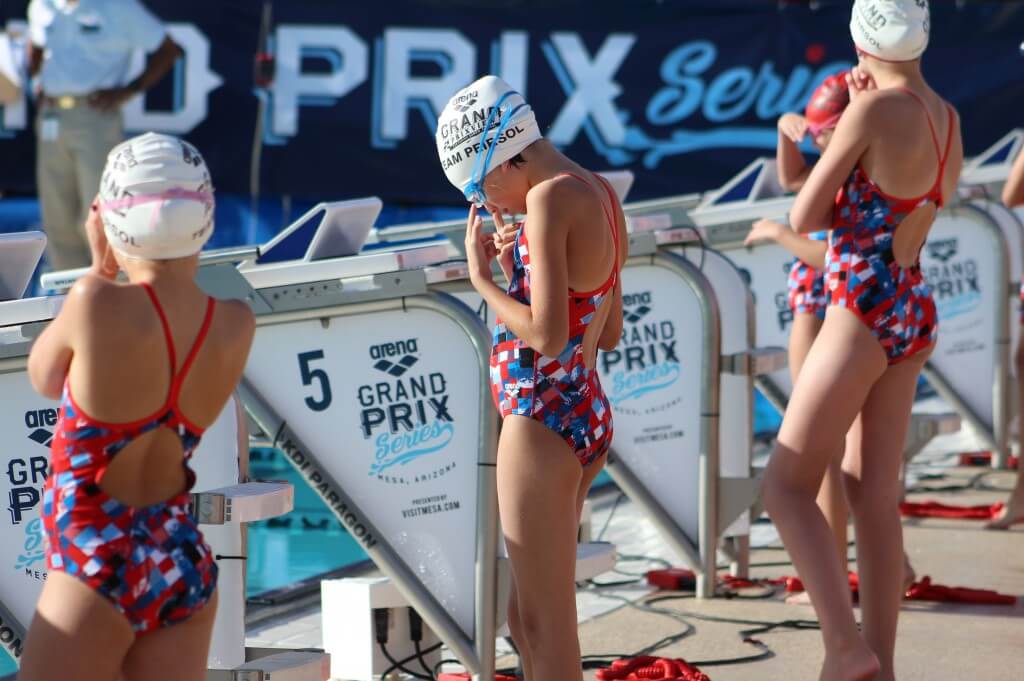3 Signs of Burnout in Young Swimmers; Be Aware to Help

By Dr. David Geier (From the Archive)
Whether it’s swimming or another activity, playing sports provides a tremendous number of benefits to children and adolescents. Not only do organized sports help to provide exercise and improve physical health, but they provide emotional, social, and academic benefits as well. In fact, playing team sports could help kids’ in their future careers. A survey of female senior executives at major corporations performed by the accounting firm Ernst & Young showed that 96% of them played sports in high school or primary school, and 55% played college sports.
Unfortunately the majority of young athletes give up organized sports before entering high school. According to the STOP Sports Injuries campaign, approximately 70% of children quit organized sports by the time they are 13 years old. Many factors outside of sports contribute to that attrition rate, such as peer influences, technology, academics, and changing interests. One of the most common sports-related reasons that kids quit playing is burnout.
Burnout might seem like a strange term to associate with sports. We usually think of burnout as a problem that adults face in their jobs. Sadly, burnout can become an issue for young athletes, from the elite swimmers to the very young athletes just starting to swim competitively.
Parents, coaches and teammates should look to identify signs of burnout in any young swimmer. There are many warnings signs that we can recognize if we look for them and communicate regularly and openly with the athlete.
Generally, sports burnout can manifest itself through changes in sports performance, emotion, attitude, and health.
1. Changes in swimming performance and practice
In terms of swimming performance, a young athlete might perform consistently worse than normal or become increasingly inconsistent. Her times might suffer or vary widely from day to day. She might struggle with routine sport-specific tasks, such as turns.
Likewise, a swimmer at risk for burnout might appear unmotivated to practice or compete in meets. She could display little enjoyment while swimming or seem to care little about the outcome of meets. She might grow increasingly uncooperative or disagreeable with coaches and teammates, even arguing with them.
2. Emotional and behavioral changes
Out of the pool, she might seem unusually depressed, angry or irritable. She could feel more and more fatigued, exhibiting a decreased energy level with her daily activities or looking utterly exhausted. She might not want to eat. She might have trouble sleeping. She might struggle to concentrate in school or when doing her homework. She also might withdraw and not want to talk to her family or friends.
3. Health and injury changes
Lastly, sports burnout can take the form of health issues. The young swimmer might frequently complain of vague, nonspecific muscle or joint pain. She might appear to take longer than normal to recover from aches and pains or even minor injuries. She might even get sick more often than normal.
Not every young swimmer experiencing burnout will exhibit all, or even many, of these signs. Parents and coaches should also remember that there can be many reasons other than sports burnout for some of these changes. Regardless, we should keep looking for these signs of burnout in our children and teammates. Try to maintain an open line of communication before kids quit swimming altogether. Hopefully we can keep kids swimming and playing sports for many years to come.
Editor’s Note: Dr. David Geier is an orthopaedic surgeon and sports medicine specialist in Charleston, SC. For more information on swimming injuries and other injury treatment and prevention topics, please go to Dr. Geier’s website at drdavidgeier.com.




Extremely relevant. Applicable to academic and social involvement too. Key for coaches, support-staff, teachers to notice and tactfully and respectfully reach out to athlete or student. Often athlete/student is deeply reaching out for true help. He/she feels incapable plus powerless of rekindling ‘old-committed-self’ and/or transitioning with renewed involvement. Keen attention and intervention can alter a life path at a pivotal-critical juncture. Significant that ‘SW’ addresses this very real, sometimes precarious, turning point in an athlete’s or student’s career.